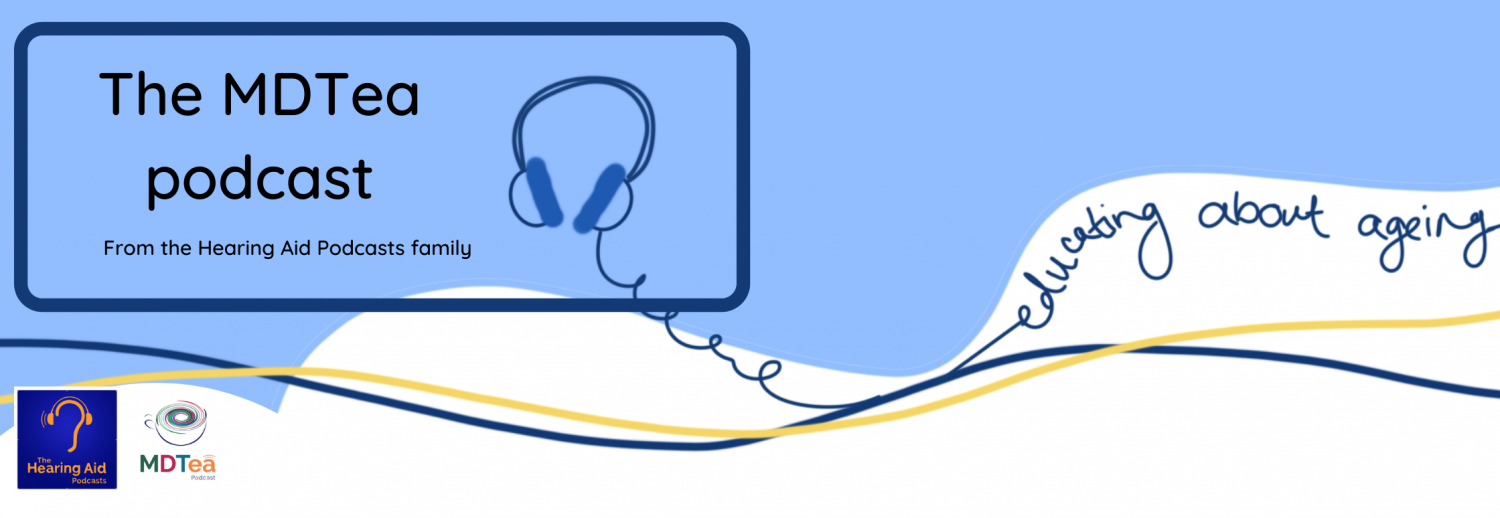Episode 1.3 Urinary Incontinence
MDTea Episode 3: Urinary Continence
Posted on 16th February 2016
Presented by: Jo Preston & Iain Wilkinson, Geriatricians at Surrey and Sussex Healthcare NHS Trust.
Core Faculty Contributors: Adam Buckler, Pharmacist (Surrey and Sussex Healthcare NHS Trust) and Sarah-Jane Ryan – Physiotherapist (University of Brighton)
 Listen in, to learn more about the conservative management of urinary incontinence, that is we will not be covering medications or surgical options. We focus on the different types of urinary incontinence and explore what steps can be taken to tackle them in a team approach.
Listen in, to learn more about the conservative management of urinary incontinence, that is we will not be covering medications or surgical options. We focus on the different types of urinary incontinence and explore what steps can be taken to tackle them in a team approach.
Here is a sip of this week’s MDTea
CPD log
Click here to log your CPD online and receive a copy to your email.
You can download the show notes here.
Episode 3 Show Notes
Continence
___
Presented by: Dr Jo Preston & Dr Iain Wilkinson
Faculty:
Adam Buckler – Lead Educational Pharmacist at East Surrey Hospital
Sarah Jane Ryan – Physiotherapist and Senior Lecturer Brighton University
Broadcast Date: 16th Feb 2016
Learning Objectives
Knowledge:
- To recall that the four types of urinary incontinence are:
- Stress
- Urgency (aka Overactive Bladder or OAB)
- Overflow
- Functional (i.e. non urinary tract in origin)
- To understand the main limitations of pharmacological therapies
- To explain the initial lifestyle measures for continence management
Skills:
- To recall the strategies that may be employed practically in optimising continence (bladder training etc).
Attitudes:
- To know that incontinence is not an inevitable part of ageing
- To understand the role of each member of the MDT in assessing continence
Definitions:
Formal / Scientific Definition:
There are four main type of urinary incontinence:
Stress incontinence – where the dam is not large enough to hold back the reservoir force
Urgency – where the reservoir contracts and overflows the dam
Overflow – where the reservoir keeps growing until it constantly laps over the top of the dam
‘Functional’ – where there is no problem with the urogenital tract at all, but circumstances mean voiding of urine happens in a socially unacceptable way for the patient.
Key Points from Discussion
In General
If you don’t ask people will not volunteer symptoms… if you do ask often patients are glad to talk about their problems.
Start management looking at the lifestyle measures and a bladder diary- a good guide is in the NICE guidance for continence in women.
NICE Guidance on Urinary Incontinence in Women and Family Practice 2001
Stress
With Stress based symptoms – strengthening the pelvic floor muscles is really the cornerstone of interventions and is easily taught.
Having regular and repeated contact with a trained professional improves the benefit from the exercises but doing this in a group or ona 1:1 basis does not make a difference.
Lamb et al. BMC Women’s Health 2009, 9:26
Overflow
Generally in men
Bladder scanning is essential
Drug and surgical therapy available
Needs referral to GP or urologist
Urge
Symptoms can be remembered with the FUN acronym – but they most definitely are not and are associated with poor health outcomes.
F– Frequency
U– Urgency
N – Nocturia
Good overview of OAB symptoms and treatment
Management –
Step 1: Lifestyle measures (as above)
Step 2: Bladder retraining
Step 3: Medications – although they often come with side effects and only ~30% of patients are taking them at the end of a year.
Persistence with prescribed antimuscarinic therapy for overactive bladder: a UK experience.
Worth noting that much incontinence is of a mixed pathology and medications will only target the urgency part of any symptoms.
Functional
This is not a problem with the patients urogenital tract – more so that the whole system is not working for them. i.e an older lady in a hospital bed having to wait for someone to come and help her to the toilet.
Management here needs a truly multi-disciplinary assessment as part of a CGA (See episode 1)
Curriculum Mapping:
This episode covers the following areas (n.b not all areas are covered in detail in this single episode):
| Curriculum | Area | |
| NHS Knowledge Skills Framework | Suitable to support staff at the following levels:
|
|
| Foundation curriculum 2012 | Section
1.4 2.1 7.2 7.3 7.5 7.9 10.1 10.5 |
Title
Team working Patient as centre of care History and examination Diagnosis and decision making Safe prescribing Interface with different specialities and other professionals Long-term conditions Health promotion, Patient Education and public health |
| Foundation curriculum 2016 | 2. Patient centred care
4. Self-directed learning 6. Interface with other healthcare professionals 7. Interaction with colleagues 10. Support for patients with long term conditions |
|
| Core Medical Training | Team working and patient safety
Management of long term conditions and promoting self-care Communication with colleagues and cooperation Evidence and guidelines Micturition Difficulties Geriatric Medicine |
|
| GPVTS program | Section 2.03 The GP in the Wider Professional Environment
Section 3.05 – Managing older adults
|
|
| ANP (Draws from KSF) | 7.3 Complications of medications and inappropriate prescribing of medications, once an independent prescriber
7.8 Urine retention, incontinence, infection 19. Managing long term conditions and promoting patient self-care |
|
| Physician Associate | 1B conditions: 11.5.5 Incontinence | |





2 Responses
[…] Episode 1.3 Urinary Incontinence […]
Such a nice blog.
I have read an amazing article here.